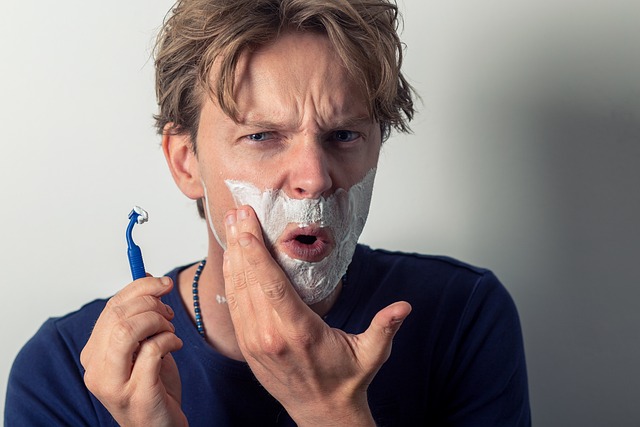Shaving can be a daily ritual for many, but if not done properly, it can lead to acne, irritation, or breakouts. Acne-prone skin requires extra care to avoid clogged pores, ingrown hairs, and inflammation. Here are the best shaving practices to keep your skin clear and smooth.
1. Prep Your Skin Before Shaving 🧼
Start by washing your face with a gentle, non-comedogenic cleanser (a product that won’t clog pores) to remove dirt, oil, and bacteria that can cause acne. Then, use warm water to rinse or place a warm towel on your face for about a minute to soften facial hair and open pores. This makes shaving easier and reduces irritation. Avoid harsh soaps, as they can dry out your skin, causing it to produce extra oil and increase acne risk.
2. Use a Sharp, Clean Razor 🪒
A dull or dirty razor can harm your skin. Dull blades pull at hair instead of cutting cleanly, creating tiny cuts where bacteria can enter and cause acne. Dirty razors carry germs that can also lead to breakouts. Replace razor blades every 5-7 shaves and rinse them well after each use. Single-blade or safety razors may irritate less than multi-blade ones.
3. Pick the Right Shaving Product 🧴
Choose a shaving cream or gel made for sensitive or acne-prone skin. Look for non-comedogenic products. Avoid products with alcohol, strong fragrances, or heavy oils, as these can trigger acne. Products with soothing ingredients like aloe vera or tea tree oil can calm your skin. Apply a thin layer to cover hair without overloading your skin.
4. Shave in the Direction of Hair Growth ⬇️➡️
Shaving with the grain—in the direction your hair grows—reduces irritation and prevents ingrown hairs (hairs that curl back into the skin, causing red, acne-like bumps). To find the direction of hair growth, run your fingers over your stubble: the smoother direction is “with the grain.” For example, facial hair often grows downward on the cheeks (so pull the razor from cheekbone to jaw). Use light, short strokes and don’t press too hard, as this can inflame your skin and lead to breakouts.
5. Rinse and Hydrate After Shaving 💦
After shaving, splash your face with cool water to close pores and remove leftover cream or hair. Gently pat dry with a clean towel—rubbing can irritate your skin. Apply a lightweight, non-comedogenic moisturizer to keep your skin hydrated and calm. If you’re prone to acne, a moisturizer with ingredients like salicylic acid can help prevent breakouts, but use it sparingly to avoid dryness.
6. Don’t Touch Your Face ✋
After shaving, avoid touching your face to prevent transferring dirt, oil, or bacteria that can cause acne. Your hands pick up germs from surfaces like phones, door handles, or keyboards, and touching your freshly shaved skin can introduce these into open pores or micro-cuts, leading to breakouts. Also, avoid applying heavy makeup, thick sunscreens, or other products right after shaving, as they can clog pores and trap bacteria. If you must use products, wait at least 10-15 minutes and choose lightweight, non-comedogenic options to minimize irritation.
7. Keep Your Tools Clean 🛠️
Clean your razor with rubbing alcohol after each use to kill bacteria and prevent acne-causing germs. Store it in a dry place to avoid rust. Always wash your hands before shaving and use a fresh towel to dry your face to keep bacteria at bay.
8. Shave Less Often if Needed ⏳
If acne keeps appearing, try shaving less frequently to give your skin time to recover. Constant shaving can stress acne-prone skin, causing redness or worsening breakouts, especially if you’re dealing with ingrown hairs or irritation. For some, switching to an electric trimmer or clippers can reduce skin contact and irritation while still keeping hair neat. Alternatively, letting facial hair grow slightly (like a short stubble) can minimize shaving frequency and give your skin a break. If you notice specific areas prone to acne, like the neck or chin, adjust your routine to shave those spots less aggressively or less often, and monitor how your skin responds.
Final Thoughts
Shaving with acne-prone skin takes a little extra care, but by using gentle, non-comedogenic products, keeping tools clean, and shaving carefully, you can avoid breakouts. Pay attention to how your skin reacts and adjust your routine as needed. If acne continues, a dermatologist can offer tailored advice.
Insights into shaving and its impact on skin




